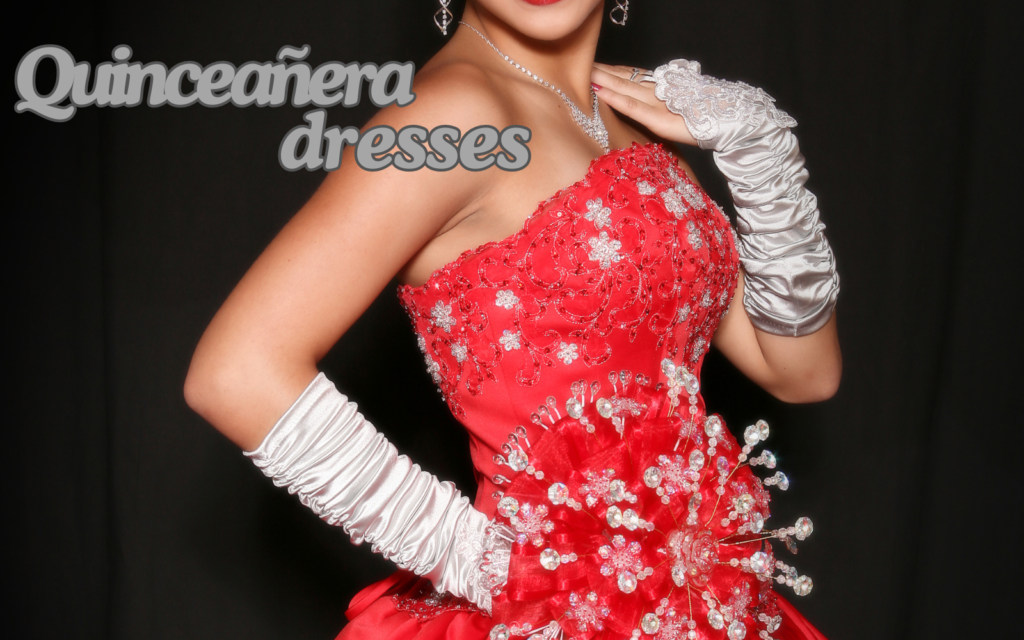The quinceañera is one of the most cherished and culturally significant celebrations in Latin American communities. This milestone event marks a young girl’s transition into womanhood on her fifteenth birthday. Among the many traditions associated with this celebration, the quinceañera dress holds a special place, symbolizing the beauty, elegance, and the rich cultural heritage of the occasion. In this blog post, we’ll explore the history, significance, and the various styles of quinceañera dresses, offering insights into how they continue to evolve while maintaining their traditional essence.
The History and Significance of the Quinceañera Dress
The quinceañera tradition dates back to ancient civilizations such as the Aztecs and Mayans, who celebrated the coming of age of young women. Over time, this tradition evolved, influenced by European customs during the Spanish colonization of Latin America. The quinceañera dress, much like the event itself, has deep roots in this blend of indigenous and European traditions.
Originally, the quinceañera dress was inspired by the gowns worn by European royalty. It was designed to reflect the young woman’s new status in society, symbolizing her maturity, purity, and readiness for the responsibilities of adulthood. The dress was often elaborate, featuring luxurious fabrics, intricate embroidery, and a full skirt that emphasized the formality and grandeur of the occasion.
Today, the quinceañera dress remains a powerful symbol of this rite of passage, representing not only the individual’s personal growth but also the cultural values and family traditions that are passed down through generations.
Styles of Quinceañera Dresses
Quinceañera dresses come in a wide variety of styles, each reflecting different tastes, cultural influences, and levels of formality. However, certain elements remain consistent across most designs: they are typically full-length, with a voluminous skirt, and are often adorned with intricate details that make the dress as unique as the young woman wearing it.
- The Classic Ball Gown: The most traditional style of quinceañera dress is the classic ball gown. Characterized by its fitted bodice and a full, dramatic skirt, this style is often crafted from luxurious fabrics like satin, tulle, and organza. The ball gown exudes elegance and is perfect for those who want to make a grand entrance. It’s usually adorned with embellishments such as lace, beading, and sequins, adding to its regal appearance.
- Modern and Sleek: For those who prefer a more contemporary look, modern quinceañera dresses offer a sleek alternative to the traditional ball gown. These dresses often feature simpler silhouettes, such as A-line or mermaid cuts, and may incorporate trendy elements like off-the-shoulder sleeves, high-low hemlines, or illusion necklines. While they may be less voluminous than the classic ball gown, these modern styles still maintain the elegance and formality required for the occasion.
- Cultural Fusion: In recent years, there has been a rise in quinceañera dresses that blend traditional and modern elements, reflecting the diverse cultural backgrounds of many young women today. These dresses might incorporate traditional embroidery or patterns from indigenous cultures, paired with contemporary silhouettes or colors. This fusion allows for a personalized expression of heritage while still embracing modern fashion trends.
- Color Choices: Traditionally, quinceañera dresses were white or light pastel colors, symbolizing purity and youth. However, today’s quinceañeras are embracing a wider spectrum of colors. Rich jewel tones like royal blue, emerald green, and ruby red are popular choices, as well as softer shades like blush pink, lavender, and champagne. Some girls choose to wear a white dress for the church ceremony and a more vibrant color for the reception, allowing for multiple outfit changes that highlight different aspects of their personality.
Customization and Personalization
One of the most exciting aspects of choosing a quinceañera dress is the opportunity for customization. Many young women work closely with designers to create a dress that is truly unique, incorporating elements that reflect their personal style, cultural background, and the theme of their quinceañera celebration.
- Embellishments: Custom embroidery, beading, and appliqués can add a personal touch to the dress, often incorporating meaningful symbols, family crests, or religious motifs.
- Fabrics and Textures: The choice of fabric can significantly impact the overall look and feel of the dress. Some girls prefer the ethereal quality of tulle or organza, while others opt for the luxurious sheen of satin or silk. Mixing textures, such as pairing a lace bodice with a satin skirt, can create a visually interesting and unique design.
- Necklines and Sleeves: The neckline and sleeves are key elements that can be tailored to suit the wearer’s preferences. Strapless, sweetheart, and off-the-shoulder necklines are popular choices, but more modest options like cap sleeves or illusion sleeves are also available for those who prefer additional coverage.
- Accessories: Accessories play a crucial role in completing the quinceañera look. Tiaras, often adorned with crystals or pearls, are a common accessory, symbolizing the quinceañera’s status as the “princess” of the day. Matching jewelry, gloves, and a coordinating bouquet can also enhance the overall ensemble.
The Evolving Tradition
While the quinceañera dress is steeped in tradition, it has also evolved to reflect contemporary trends and the individual personalities of the young women who wear them. Today, many quinceañeras are choosing to incorporate non-traditional elements into their dresses and celebrations, making the event a unique expression of their identity.
For example, some quinceañeras opt for shorter dresses for the reception or a second outfit change that allows for easier movement during the dance. Others choose dresses with bold, non-traditional colors or avant-garde designs that challenge the norms of what a quinceañera dress “should” look like.
This evolution reflects the changing nature of the quinceañera celebration itself, which continues to adapt to the times while maintaining its core values of family, faith, and community.
Conclusion:
The quinceañera dress is more than just a beautiful gown—it is a symbol of a young woman’s transition into adulthood and a reflection of her cultural heritage. Whether she chooses a traditional ball gown, a modern silhouette, or a dress that blends the two, the quinceañera dress is a key element of this important rite of passage.
As this tradition continues to evolve, the quinceañera dress remains a powerful expression of identity, blending timeless elegance with personal style. For many young women, the process of choosing and wearing their quinceañera dress is a highlight of their celebration, marking a day that will be remembered for years to come.
FAQs:
1. How far in advance should I start looking for a quinceañera dress?
It’s recommended to start shopping for your quinceañera dress at least 6 to 9 months before the event. This allows plenty of time for finding the perfect dress, making any necessary alterations, and coordinating accessories. If you are opting for a custom dress, starting even earlier is advisable to accommodate the design and tailoring process.
2. What is the average cost of a quinceañera dress?
The cost of a quinceañera dress can vary widely depending on factors such as the designer, fabric, and level of customization. On average, quinceañera dresses range from $200 to $1,000. However, custom or designer dresses can exceed this range, sometimes costing several thousand dollars. It’s important to set a budget and consider all associated costs, including alterations and accessories.
3. What should I consider when choosing the color of my quinceañera dress?
When choosing the color of your quinceañera dress, consider factors like your personal style, skin tone, and the overall theme of your celebration. Traditionally, lighter colors like white, blush, or pastel shades are popular, but modern quinceañeras often choose bold jewel tones or even black for a more dramatic look. Some girls also select colors that have personal or cultural significance to them.
4. Can I wear a quinceañera dress more than once?
Yes, you can definitely wear your quinceañera dress more than once, though it’s often worn only for the quinceañera celebration itself. If you choose a dress with a versatile design, you might be able to wear it again for other formal events like proms or weddings. Some girls also choose to repurpose or alter the dress for future occasions.
5. Do I need to wear a petticoat under my quinceañera dress?
Whether or not you wear a petticoat depends on the style and structure of your dress. If your dress has a full, ball gown skirt, a petticoat can add volume and help maintain the shape of the dress. Some quinceañera dresses come with built-in petticoats, while others might require a separate one for the desired effect. If you prefer a more streamlined look, you can opt to skip the petticoat altogether.

